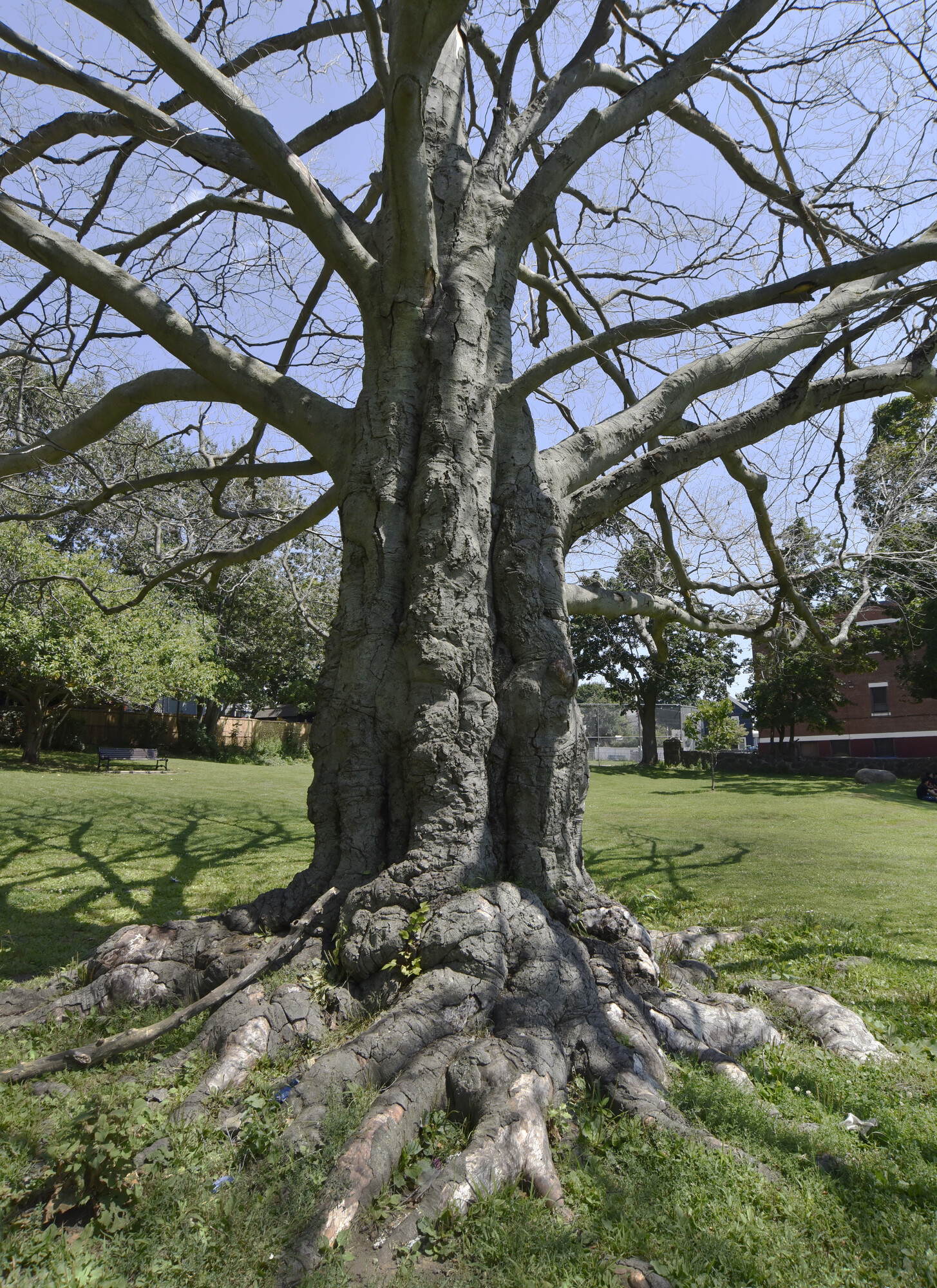SWAMPSCOTT — With its roots in Swampscott for more than a century, the large beech tree behind the Hadley School at Linscott Park will be cut down this month as a relatively new illness plagues trees across the Northeast region.
Beech Leaf Disease, a rapidly spreading ailment that weakens and kills lower branches and leaves before killing an entire tree, was first identified in 2012 in Ohio before making its way to Massachusetts in 2020.
In the last few years, Department of Public Works (DPW) Director and member of the Tree Committee Gino Cresta said the disease has devastated beech trees across the Commonwealth. The Town of Swampscott, Cresta said, stopped planting the large-canopied beech species as the disease became more prevalent.
“We’ve got a couple other beech trees on the Town Hall property, and we treated those last year in an effort to try to save them,” Cresta said. “We had one of the tree experts come (to Linscott Park) and they said no matter what you do, the tree’s not worth saving. It’s too far gone.”
Beech Leaf Disease, which infects and typically kills both American and European beech tree varieties, can damage local ecosystems and reduce their shade canopy and natural air filtration.
Peter Church, director of forest stewardship for the Department of Conservation and Recreation, warned Massachusetts residents to keep their eyes out for signs of the disease — dark bands between leaf veins, curled or deformed leaves, or a thin canopy.
“Urban tree canopies and forests are invaluable resources that provide clean air and water, help mitigate risks associated with climate change, reduce household energy consumption, and provide critical habitats for a wide variety of species that depend on healthy trees to survive,” Church said in a written statement. “Beach Leaf Disease presents a new threat to the Commonwealth’s beech tree population, and it is important that property owners continue to look for signs of distress in an effort to prevent the disease from spreading.”
After cutting down the tree, the DPW will work with the tree committee to plant a different species in its place. Cresta, who carved his initials into the Linscott Park beech tree as a young boy, said the tree’s age and proximity to the Hadley School made it a popular children’s play spot for decades.
“I hate to lose any tree in town to a disease, especially a tree that’s over 100 years old,” Cresta said. “It’s got some of those low branches, so you always see a kid climbing in this tree.”

